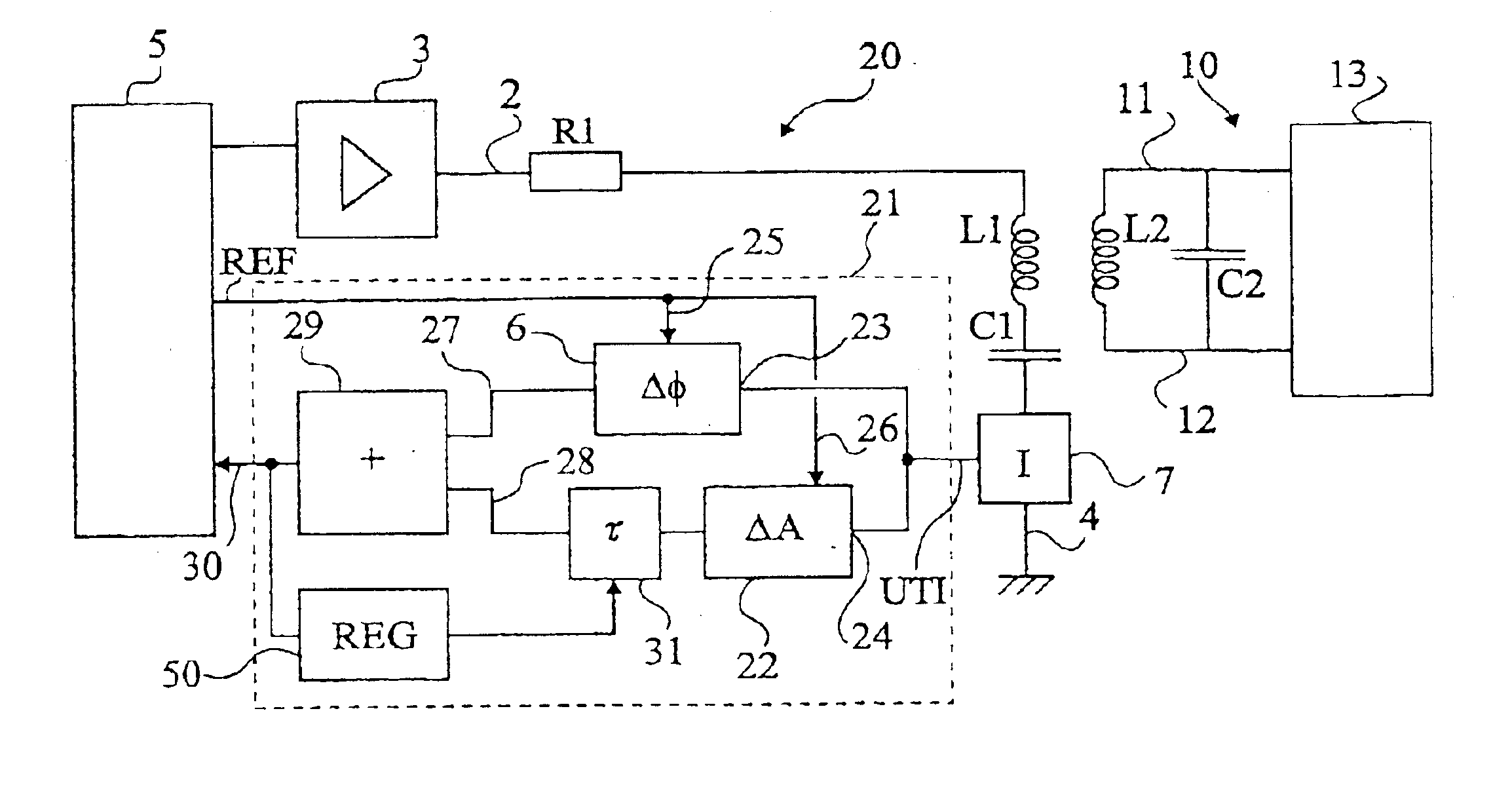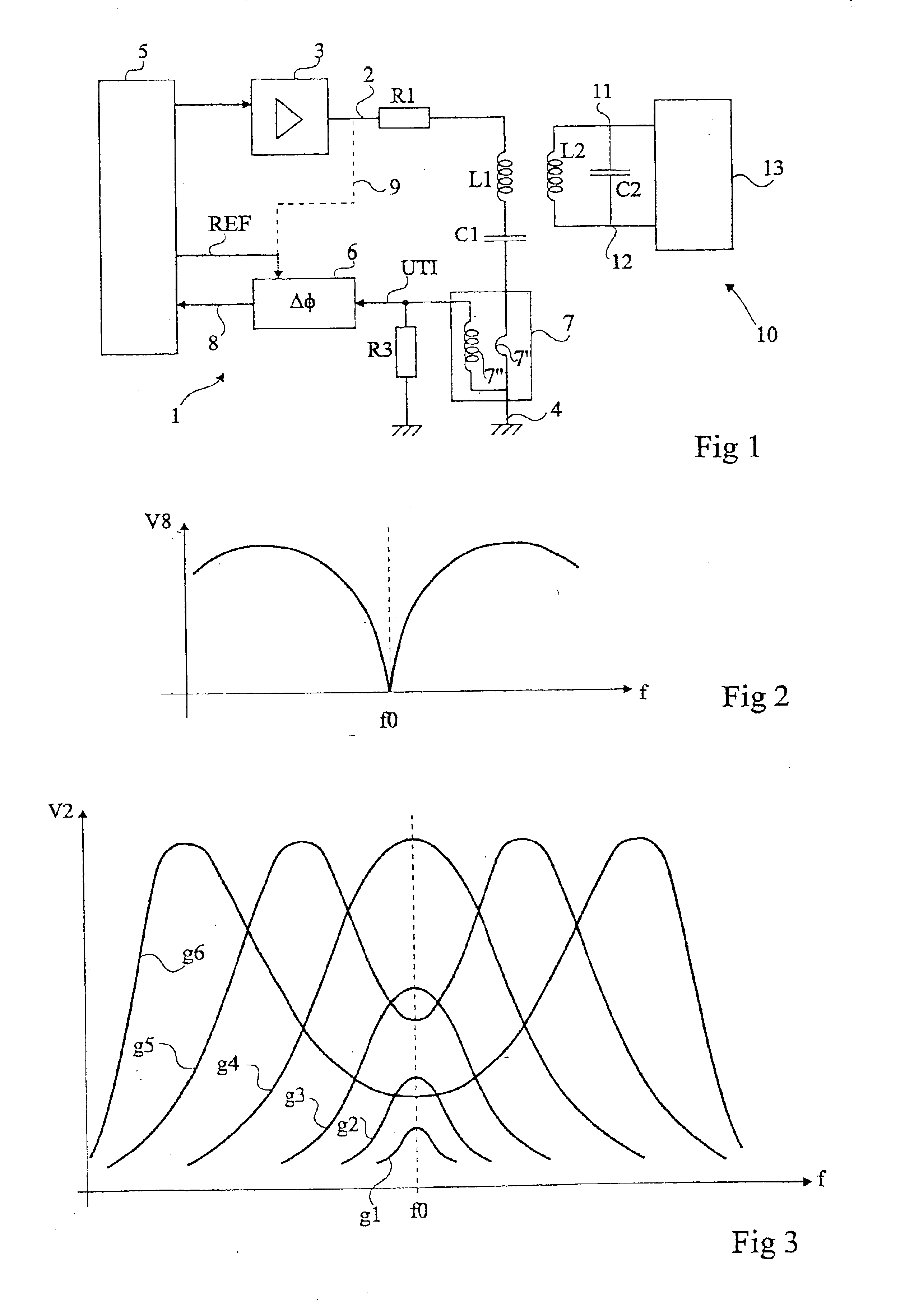Electromagnetic transponder reader
a transponder reader and electromagnetic technology, applied in the field of electromagnetic transponder systems, can solve the problems of adversely affecting the transponder remote supply, the frequency response of the phase demodulator, and the tolerance of capacitors, so as to achieve the effect of reducing the range of capacitors, reducing the cost of capacitors, and improving the reliability
- Summary
- Abstract
- Description
- Claims
- Application Information
AI Technical Summary
Benefits of technology
Problems solved by technology
Method used
Image
Examples
Embodiment Construction
Same elements have been referred to with same references in the different drawings. For clarity, FIGS. 2, 3, 5, and 6 are not to scale. For clarity still, only those elements which are necessary to the understanding of the present invention have been shown in the drawings and will be described hereafter. In particular, the control, processing, and exploitation circuits of the terminal and of the transponder have not been detailed.
A feature of the present invention is to provide, within an electromagnetic transponder read / write terminal, a demodulation circuit which, to extract an image from the transponder's modulation circuit based on a measurement of the signal in the terminal's oscillating circuit, sums up the results of an amplitude demodulation and of a phase demodulation while delaying one of the two results with respect to the other. The delay enables solving problems of synchronization of the two demodulation results. Their sum can then be used, which is considerably simpler...
PUM
 Login to View More
Login to View More Abstract
Description
Claims
Application Information
 Login to View More
Login to View More - R&D
- Intellectual Property
- Life Sciences
- Materials
- Tech Scout
- Unparalleled Data Quality
- Higher Quality Content
- 60% Fewer Hallucinations
Browse by: Latest US Patents, China's latest patents, Technical Efficacy Thesaurus, Application Domain, Technology Topic, Popular Technical Reports.
© 2025 PatSnap. All rights reserved.Legal|Privacy policy|Modern Slavery Act Transparency Statement|Sitemap|About US| Contact US: help@patsnap.com



